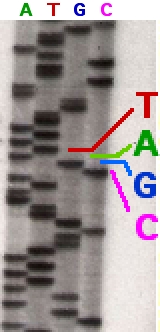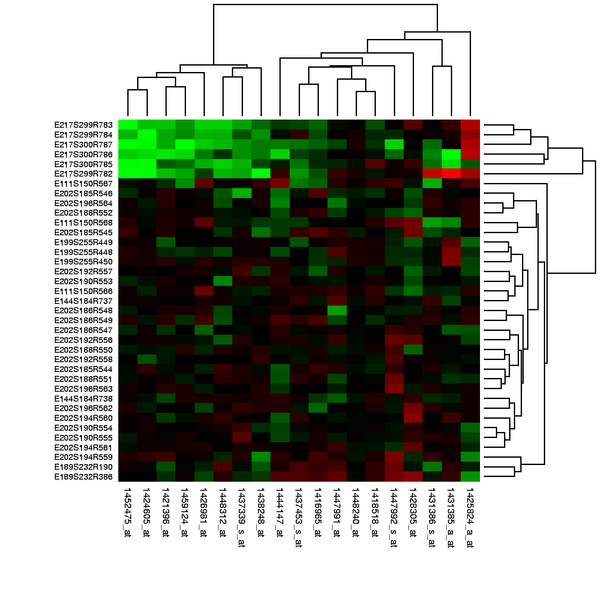Genetic Testing
There are several ways to determine a person’s genes. Recently, large investments have been made in DNA sequencing technologies. Several different technologies are competing to become the new standard genetic test.
Genetic variations in the population can be detected by microarrays, like the one pictured above. DNA from the patient is fluorescently labeled. The DNA from the patient only hybridizes to DNA that is a compliment to it. The spots on the microarray indicate a positive result for that DNA sequence.

Microarrays are well established commercial technologies. Above are two microarrays in their packaging. Microarrays are useful for detecting single-nucleotide polymorphisms, SNPs, or gene expression profiles.

An alternative approach to detecting single-nucleotide polymorphism is to sequence the entire genome. While more expensive than detecting individual single-nucleotide polymorphism, whole genome sequencing captures all the single-nucleotide polymorphism of a person and only need to be done once in her life time. The National Institute of Health has set a goal of whole genomic sequencing for $1,000 a person by 2015. Above is a DNA sequence being read out using the Sanger Method. The Sanger Method was basis of DNA sequencers used in the Human Genome Project.

Variations in Genes are not the only thing that makes people respond differently to drugs. Differences in the expression levels of those genes also affect how a drug will work on a patient. Above is a heat map of different genes’ expression levels. Gene expression profiling is usually carried out with microarrays. The amount of RNA encoded by a gene is measured by how much binds to a microarray. Gene expression profiling is also useful for identify early biomarkers for diseases. Elevated prostate specific antigen is caused by elevated gene expression and can be used as an early warning indicator of prostate cancer.